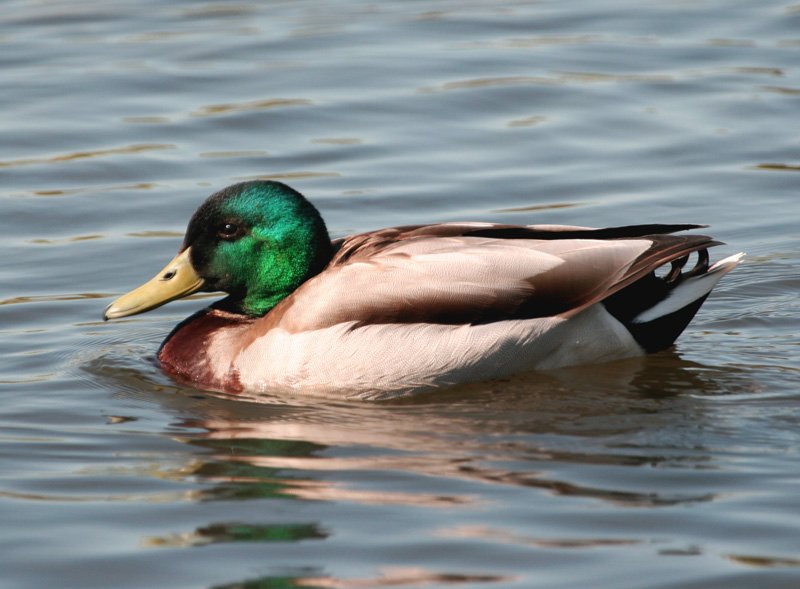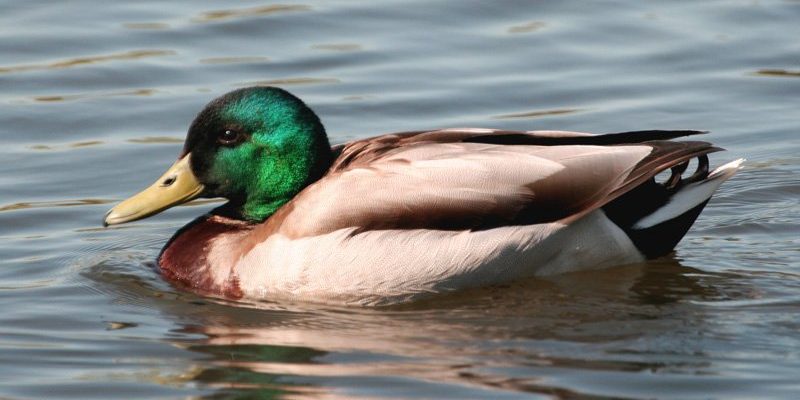
Understanding the Mallard’s Appearance
Mallards are often recognized by their striking plumage. The males, called drakes, are particularly eye-catching. They sport a shiny green head, a white neck ring, and a chestnut-brown breast. The rest of their body is gray with a distinctive blue patch on their wings known as a speculum. If you spot a duck with these features, it’s likely a male mallard.
On the other hand, female mallards have a more muted palette. They’re mostly mottled brown, which helps them blend into their surroundings, especially when nesting. The key feature to look for is the same blue speculum on their wings, often framed by a lighter border. Understanding these color differences can help you easily identify which mallard you’re looking at!
It’s important to note that juvenile mallards may look different from their adult counterparts. Young males might not have the vibrant green head yet, and young females can be less colorful. This can make identifying them a bit tricky, but keep an eye on those unique wing patterns!
Size and Shape: Recognizing Mallard Body Language
When identifying a mallard, pay attention to its size and shape. Adult mallards are medium-sized ducks, typically about 20 to 26 inches long. They have streamlined bodies, long necks, and a broad, flat bill. This shape helps them glide effortlessly on water and take off into the air.
You might notice how they behave when swimming or walking. Mallards have a distinct quacking sound, especially the females. They often dip their heads under the water to forage for food, which is another telltale sign. If you see a duck repeatedly bobbing its head up and down and quacking, it’s probably a female mallard. Observing these behaviors can be quite entertaining and educational!
You might wonder what sets mallards apart from other duck species. Their size is usually a good indicator, but also look for the way they interact. Mallards are social birds and often gather in groups, especially in the breeding season. So if you spot a cluster of ducks, there’s a good chance mallards are among them.
Where You’ll Find Mallards: Their Habitat
Mallards are incredibly adaptable and can be found in a wide range of habitats. You’ll most commonly spot them in freshwater lakes, ponds, rivers, and marshes. They thrive in areas with plenty of vegetation nearby, as it provides cover and nesting materials. If you’re near a park or nature reserve, keep your eyes peeled!
You might also see mallards in urban settings. They’ve learned to find food in parks and city ponds. This versatility means that you don’t have to go far to spot them. Just look for open water and grassy banks, and you’re likely on the right track to finding mallards.
During migration, mallards can cover significant distances. They often travel in large V-shaped flocks. If you see a bunch of ducks flying together overhead, chances are, they could be mallards migrating to their wintering grounds. Recognizing their flying patterns is a fun way to connect with their migratory habits!
Sounding Off: Identifying Mallard Calls
What truly makes mallards stand out is their vocalizations. Mallard females are known for their distinctive quacking sound, which can be quite loud. They often quack when they’re alerting their companions or during breeding season, making it easier to identify them even if you can’t see them.
Males, on the other hand, have a softer, raspier sound, which can be less noticeable. They might also produce a low whistle or grunt. While you might not immediately think of sound as a way to identify a duck, it’s a helpful clue. So, the next time you hear that classic “quack,” get ready to look for those beautiful mallards!
Listening to their calls can also give you insight into their behavior. If you hear a flurry of quacking, it could mean they’re feeling threatened or are excited about something. This aspect of their communication is as essential to identifying them as their appearance.
Feeding Habits: What Do Mallards Eat?
Mallards are omnivores, which means they eat a variety of foods. Their diet consists mainly of aquatic plants, seeds, insects, and small fish. When you watch them forage, you’ll often see them dabbling at the water’s surface to pick up food. This unique feeding technique is a hallmark of mallards, distinguishing them from more diving duck species.
You might also spot them foraging on land, where they’ll munch on grass, grains, and even scraps left by humans at parks. This behavior shows how resourceful they can be in finding food, adapting to their environment. If you’re near a body of water, watch closely as they comb through the vegetation or scavenge around the shoreline for snacks.
Being aware of their eating habits not only helps with identification but also enhances your understanding of their role in the ecosystem. Mallards contribute to controlling insect populations and dispersing seeds, making them an integral part of their habitat.
Breeding Behavior: Spotting Mallard Mating Rituals
If you’re interested in observing mallards up close, pay attention during the breeding season, which typically occurs in early spring. Males often display elaborate courtship behaviors, showcasing their vibrant plumage. They might perform what’s known as “head bobbing,” where they bob their heads up and down to attract females. This behavior is a fascinating sight!
Females select their mates based on these displays, but they’re not the only ones making decisions. Breeding pairs are often formed, and once they mate, they’ll build nests near water. The females do most of the nesting work, creating cozy spots hidden among reeds or tall grass. If you’re near a pond in spring, keep an eye out for these nesting sites!
Once the female lays her eggs, she’ll incubate them for about four weeks. The ducklings will hatch with their eyes open and are able to swim almost immediately. Watching this process unfold can be incredibly rewarding, and it’s a testament to how resilient these birds are.
Identifying a mallard in the wild is all about knowing what to look for. Whether it’s their vibrant colors, unique sounds, or playful behavior, each detail adds to the joy of discovering these beautiful ducks. By understanding their habitat, feeding habits, and breeding rituals, you can enhance your outdoor experiences and deepen your appreciation for nature.
So next time you’re out for a walk by the water or enjoying a day at the park, keep an eye out for these charming birds. You never know when you might spot a colorful drake or a foraging female. Happy birdwatching, and may your encounters with mallards be plentiful and memorable!

